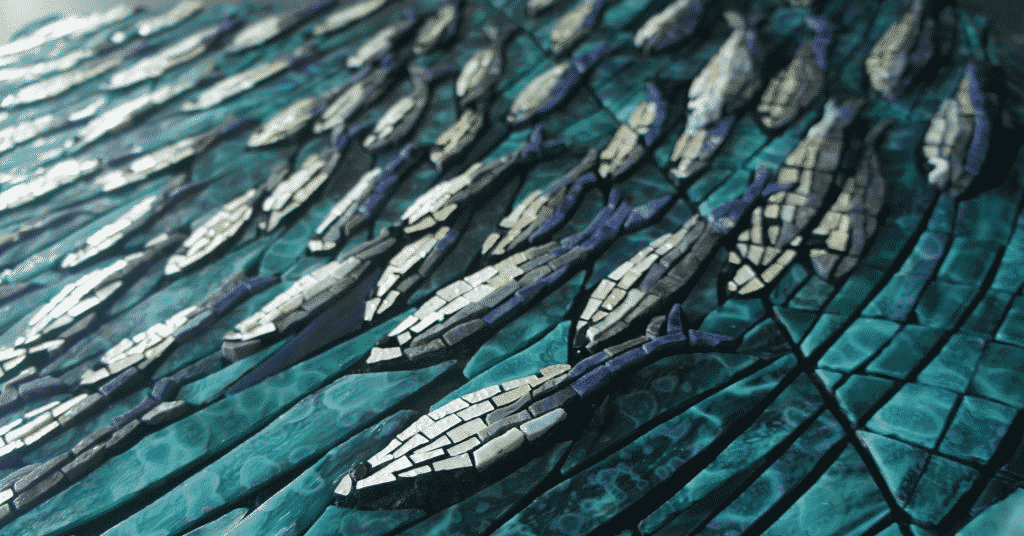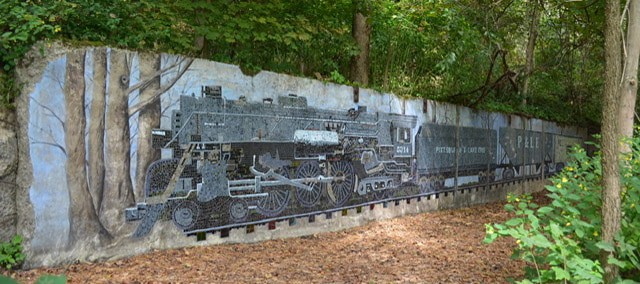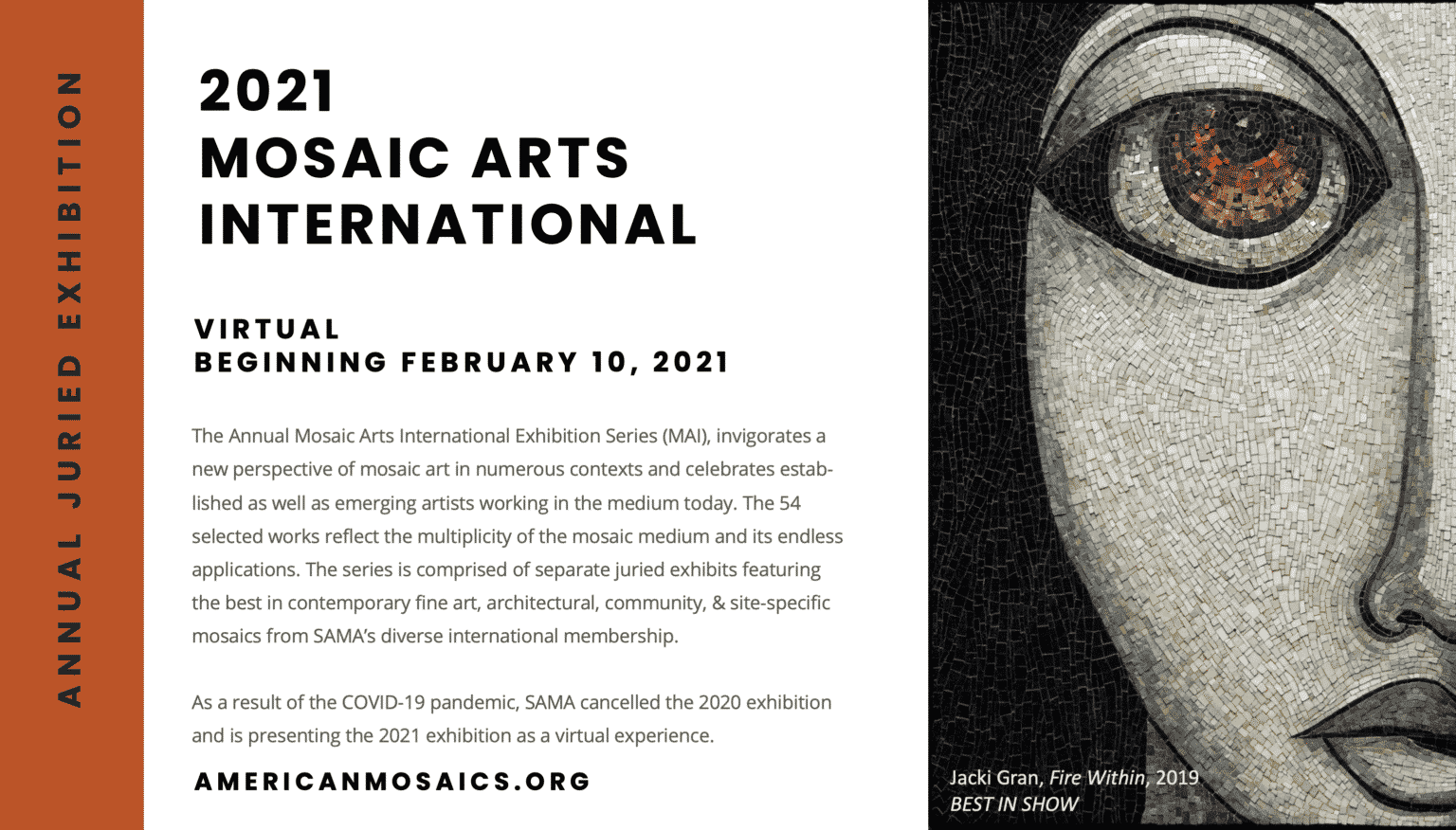Caught by Joanne Dashel, 2020
Today’s choice of mosaic from the MAI exhibition goes to the mosaic “caught” from Joanne Dashel. I am impressed with her use of andamento to make the movement of the fish Schwarm visible. It is a distinctive feature of mosaic that one can use the direction of how to place the material plus the lines that are forming in between the mosaic pieces to give the section of an image a strong movement. She has chosen this motive in fascination of the sardines moving and mastered it excellent to depict this movement. I also like the use of the spaces in between the mosaic pieces to draw the fishing net. Using these spaces for making the design has always been intriguing for me in mosaic. Really well done here.


